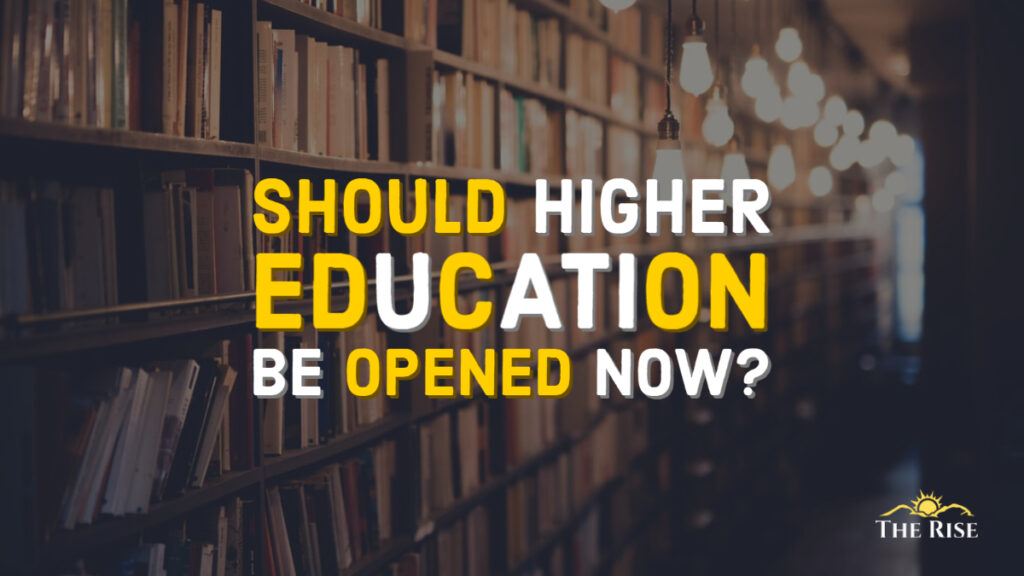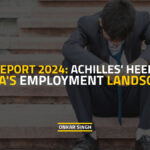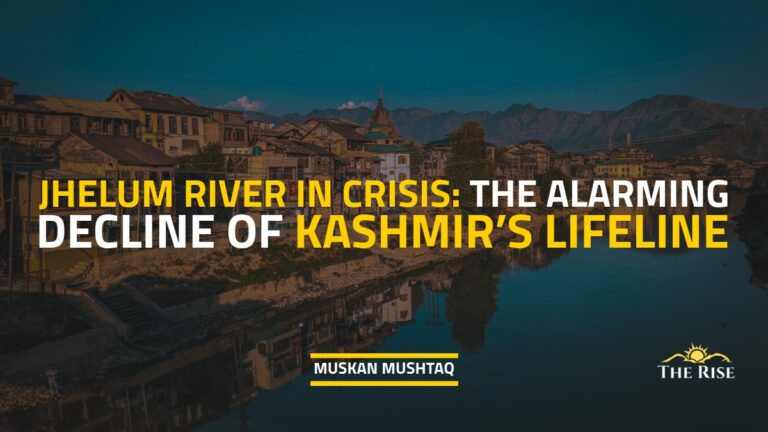National Education Day is celebrated every year on November 11, 2020, in India. This day is celebrated to mark the birth anniversary of Maulana Abul Kalam Azad, the first Minister of Education of Independent India. Hence, today is an important day to contemplate upon the issues faced by the students of our country due to the prolonged closure of their colleges and universities.
India has seen a series of lockdowns and unlocks embedded with the guidelines since March 2020. Corona-induced lockdowns affected the normal life of every person across the age in the country. As a result of the sudden closure of education institutions, its gradual resumption through online mode got acceptance despite a large section having inadequate internet and requisite IT equipment. The digital divide and hugely varying socio-economic and geographic limitations took a back seat to keep the education process rolling. Different innovative models of evaluation and examination came to the fore and got implemented amidst chaos in the community of students, teachers, and regulators.
Change of perception
The impact of COVID-19 continues across the country as in other parts of the world. But, the series of unlocking and conduction of examinations with the physical presence of students in institutions, successful conduction of admission tests & job-related examinations across the country, and the overall COVID-19 statistics of India showed a ray of hope.
Also Read: Is Online Learning Deleterious for Kids?
Carefree attitude is quite predominant in the rural areas where people are leading their normal life, hardly scared of the pandemic.
The conduction of elections by the Election Commission of India under COVID-19 restrictions has acted as a game-changer and emboldened the Indians against the pandemic. The scenes of election rallies of political leaders including Prime Minister, Chief Minister(s), Union Ministers, etc. with thousands of people huddling together to listen and watch have been quite common. Also, one can roam around at any place, be it urban or rural to see the nonchalant public at large. This nucleation of the carefree attitude is quite predominant in the rural areas where people are leading their normal life, hardly scared of the pandemic. The opening of shops, restaurants, cinema halls, and resumption of activities following COVID guidelines of wearing masks, maintaining physical distance, sanitization, etc. has brought near normalcy in life.
Introspecting online education
The online education delivery at primary, secondary, and higher education levels has been enforced with the use of meager IT resources available at the end of students and educators. There are ample statistical inputs confirming that the country reels under severe digital divide, meaning thereby that some students stay at the places which do not have internet connectivity at all. The condition of teachers and the educational institutions are equally daunting with the insufficiency of internet connectivity. Honest delving into the prevailing practices shows that the majority of teachers across the country are using their own resources to continue with the online mode of sharing learning resources and teaching.
The miseries of students and teachers in the online mode of education, especially for those belonging to poor socio-economic backgrounds necessitate the earliest resumption of on-campus teaching-learning activities.
With the online education happening everywhere, the homes of teachers, as well as students, are also facing an acute shortage of internet data, electricity failures, compatible devices like laptops, smartphones, computers, etc. along with the physical spaces to carry out such activities without any disturbances. The miseries of students and teachers in the online mode of education, especially for those belonging to poor socio-economic backgrounds, necessitate the earliest resumption of on-campus teaching-learning activities.
Unlocking education and concerns
Unlocking of the education sector has begun in different parts of the country as per the norms detailed for doing so. Consequently, few education institutions are getting opened in a phased manner.
Self-oriented learning is good only when it is supplementary to classroom teaching.
In certain cases, like in professional education, the reliance on online mode of education is still desired to continue assuming that the students and teachers in such courses are better IT equipped. Howbeit, the online mode of education is fallacious, ineffective, less productive, and lacks access with equity on account of the digital divide and socio-economic-geographic limitations. This online mode has entrusted the responsibility of learning to the students through self-oriented learning to a great extent. The experiences indicate that self-oriented learning is good only when it is supplementary to classroom teaching.
Also Read: Uncovering implications of syllabus reduction at secondary level
It goes without saying that everyone undertakes formal education once and has to use its knowledge and understanding throughout life. The concerns about the quality of education, its deliveries, and the learning levels of the students in this online education are germane. Hence, the likely deficiency in learning levels is of paramount worry.
Students of 18+ age are matured enough to exercise self-restraint in light of COVID-19.
Conspicuously, the educational institutions of lower classes that handle children of tender age with a lesser understanding of self-restraint are opened while it is not so for all higher education institutions that majorly handle students of 18+ age, who are matured enough to exercise self-restraint in light of COVID.
Also Read: Work-life balance of teachers in digital learning environment
Noticeably, the absence of vaccines for combating COVID-19 has pushed to accept the new normal of carrying out activities while taking proper precautions for securing each other. The discussions are abuzz for certain states mulling over enforcing the law to ensure that everyone covers the face in public. Under such circumstances, when society has to live with the threat of Corona, the continued closure of higher education institutions in particular needs honest introspection. Some of the key questions requiring urgent & honest attention are,
- Why can’t the on-campus classes be held with proper restrictions?
- Are the students of higher education institutions not grown up enough to take precautions?
- Are the institutions capable of conducting the online education process with the same efficacy as that of on-campus teaching-learning processes?
- Who will compensate for the deficiencies created due to inadequate learning and understanding due to the online mode of education?
- Will the learning gaps with current batch students not lead to permanent damage to such students with respect to their competence to contribute to the good of society?
- When the gatherings have already been permitted, why should the on-campus classes not be permitted?
- Why can’t the residential institutions be not operated in the non-residential mode in the interest of teaching-learning?
- Why can’t the blended mode of learning be practiced i.e. online for those who can afford and on-campus for those who can’t afford and are unable to do self-learning?
- Why can’t the institution do regular scanning and carry out the teaching-learning activities on its campus for all those who are asymptotic while adhering to a stringent code of preventing COVID-19?
- How to overcome the weakening of morale, potential, enthusiasm and loss of opportunities to youth under such disruptions?
Also Read: Ensuring Education to Poor in Post-Pandemic Era
With half of the current academic session nearing the end very soon, it is an opportune time to act fast and work out the suitable strategies for opening the education sector completely while adhering to stringent guidelines to prevent the spread of the pandemic.
Disclaimer: The views expressed in this article are of the author solely. TheRise.co.in neither endorses nor is responsible for them.
About the author
Prof. Onkar Singh is the Vice Chancellor of Veer Madho Singh Bhandari Uttarakhand Technical University, Dehradun, He has been the Founder Vice-Chancellor of the Madan Mohan Malaviya University of Technology, Gorakhpur (U.P.). He is a Professor of Mechanical Engineering at Harcourt Butler Technical University, Kanpur (U.P.).










